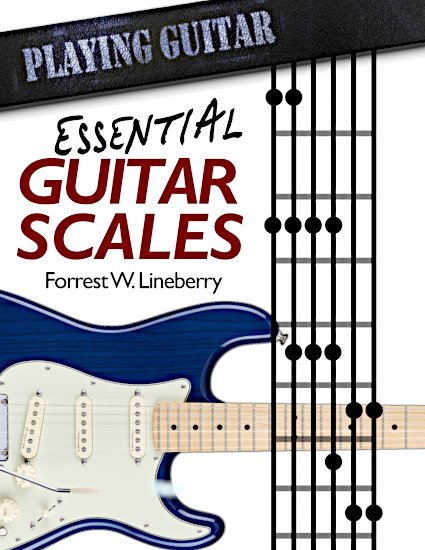Introduction
Up to this point, it’s been left to you to take the ideas we’ve covered and work them out on paper and on the fretboard through your own exploration and experimentation. I’ve taken this approach to presenting the material In the hopes of helping you to avoid one of the most common traps that players fall into — pattern playing.
Due to the guitar’s tuning and fret layout, the instrument lends itself very well to seeing notes on the fretboard in shapes and patterns. You can pick up almost any book or visit any website on playing the guitar and you will see chords and scales presented as fretboard shapes to be learned and applied to playing music. In fact, most players first learn the guitar through shapes and patterns with very little if any understanding of where those shapes come from or how they function. Many even go their whole lives never knowing anything more on the fretboard than a few shapes and patterns. This type of rote learning tends to encourage “box” thinking on the instrument. Box thinking is the mistaken Idea that each chord or scale is found in only one or two locations on the fretboard and must be played with a specific finger combination. Playing a chord or scale requires you to move your hand to one of those specific locations Box thinking leads to chasing notes around on the fretboard as the player jumps from one location to the next. I’m not trying to suggest that there’s anything wrong with moving to different locations on the fretboard while playing. In fact, this can be very useful. I’m only insisting that the choice of where to play on the fretboard should be based on musical decisions rather than a player’s limited knowledge of the fretboard.
Throughout these lessons I have endeavored to show you that the notes making up any scale or chord can be found covering the entire fretboard. With this understanding in place, you’re in the best possible position to take advantage of the organization provided by patterns and shapes without getting stuck in boxes. My goal with this lesson is not to give you a comprehensive encyclopedia of chord shapes and scale diagrams but to cover just enough of the basic concepts and the critical shapes needed to help you organize chords, scales and arpeggios on the fretboard.
CAGED
The basis for good fretboard organization is grounded in what has become known as the CAGED system. The name comes from the five basic open position chords that most beginning players learn:

Before we look at the CAGED system, let’s take a moment to examine these chords in more detail. We can tell from the chord symbol that each of these chords is a major chord. (Review the Triads lesson if this is not clear.) If we look at the notes that make up each chord, we can verify that each chord is made up of only three notes, but some of the notes are doubled and tripled to allow more strings to be played at once. We can also see that the root note of each chord is the lowest note of each chord making each chord a root position triad:

By converting the notes to intervals, we can verify that each chord follows the formula for major chords — R 3 5:

If we take these chord shapes and move them up the fretboard so that each chord is rooted on the same note (C in his case), we create an interlocking grid that covers the fretboard:









Can you see how each chord is now a C chord but retains the shape of the original CAGED chord it’s based on? Study the diagrams until this is clear. Pay particular attention to the notes that overlap between one shape and the next. It’s also important to notice how the shapes repeat at the C chord. This is important when dealing with roots other than C. You guessed it. This same sequence of shapes works for every key. You just have to move the entire network up or down the fretboard to line the shapes up with the correct root note.
Each of these shapes can be altered to form minor, diminished and augmented chords by raising or lowering the appropriate intervals. We’ll cover those shapes as needed in future lessons. For now, we need to look at major chords and how this pattern of chord shapes can be used as a road map on the fretboard for locating arpeggios and scales.

Book Title
Essential Guitar Scales
The scales you need, how to learn them, how to practice them, how to USE them.
Sell Link
Coming in early 2020!
Sample Chapter Links
Sample Chapters

